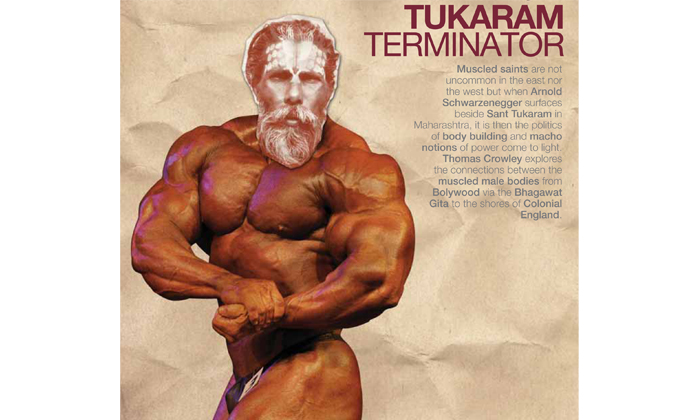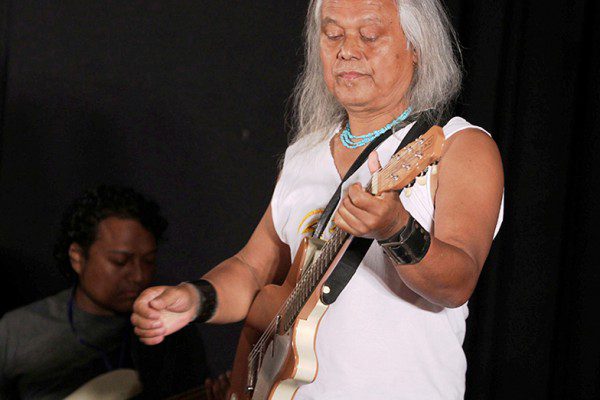“If you can hope for a thirty-six inch chest, do not be satisfied with one measuring thirty-two inches. The additional four inches will add to your happiness and usefulness.”
This exhortation is from an entirely un-ironic essay called “How to Get Muscular,” penned by Charles Wadsworth, Jr. in 1891. Wadsworth was part of the Muscular Christianity movement that became wildly popular during the Victorian era. Bodybuilding was not just a means of finding contentment, it was a downright duty, and a religious one at that. Christians could only perfect their souls by perfecting their bodies. Wadsworth even posited Christ as the ultimate muscle man, a chiseled carpenter pushing his way through Judea. (Perhaps an odd description for the man who famously proclaimed “If someone strikes you on the right cheek, turn to him the other also.”)
Needless to say, it was only Christian men who were supposed to follow this new ideal of Christianity. The whole movement was distinctly masculine, arriving as a backlash against the growing crisis of masculinity in light of nascent feminism, the increasing visibility of homosexuality, the supposed decadence of newly-industrialized society, and, in Britain, threats to empire: the Indian Rebellion of 1857, and the ongoing Boer Wars. The difficulty of the times was underscored by Dr. R. W. Conant in his 1904 tome The Manly Christ: A New View, which has a chapter decrying the “feminization of Christianity” and contains the assertion: “a strenuous age demands a strenuous Christ.”
I came across these odd old books when I was a college student, searching through my university’s cavernous archives. By the time I arrived in India, I had mostly forgotten about this antiquated subject. But on trip to ‘Sant Tukaram’s’ hometown of Dehu, Maharasthra, I returned to the realm of saintly muscles.
Tukaram was a seventeenth century poet-saint who is still revered in Maharashtra and beyond. He was a leading light of the varkari sect, a vibrant part of the bhakti movement. As a non-Brahmin religious poet, he enraged the religious establishment while writing and singing down-to-earth about his devotion to God, his connection to animals, his disdain for hypocritical priests and his near-existential struggles with faith. Hardly a pillar of traditional masculinity, he sometimes referred to himself in the feminine (“‘She’s crazy for God!’ says the world of me”).
“But I’ve also seen age-worn gyms amidst the crumbling havelis of Old Delhi and in the Ridge forest near Delhi University, signs that an obsession with bodily strength is not just a recent import.”
As far as I know, none of his poems make any reference to pumping iron or getting buff. I was surprised, then, to see the image of Tukaram on a banner in Dehu advertising a body-building competition in celebration of the great saint’s birth. At the top of the poster was a verse from a poem, presumably one of Tukarams many thousands (although I couldn’t confirm this with my Marathi-speaking friends), saying that the body should be well, since it is a means to God. Somehow, I couldn’t imagine that when Tukaram spoke of bodily wellness, he had rippling muscles in mind. But immediately below Tukaram was a likeness of Arnold Schwarzenegger, in only a black Speedo, in full muscle-flexing mode. Schwarzenegger was already a bizarre figure in his own right, a bodybuilder turned Hollywood superstar turned California governor. What was I to make of him sharing a poster with a beloved Maharashtrian saint?
In some ways, Schwarzenegger’s appearance on the poster makes sense. It is by now a well-worn observation that cultural ideals of beauty are changing in India, especially as they relate to the male body. Gone are the days when a paunch was a sexy sign of wealth and good breeding. Here are the days of a muscle-bloated Aamir Khan in ‘Ghajini.’ This new image of Indian manliness draws generously from Hollywood examples, and in some cases even exceeds them; Guy Pearce, the star of ‘Memento’ – the movie on which ‘Ghajini’ is based – is scrawny in comparison to his Bollywood counterpart.
And the new Indian male is not just in movies. In my neighborhood in Delhi, there are stores hawking the latest protein drinks and muscle enhancers. There is also a gym called “Big Guns,” which perhaps unintentionally drives home the link between bodybuilding and the aggressively masculine use of force. (I’ll only note in passing the enduring phallic symbolism of the gun.) Clearly, lots of people in my adopted city are trying to get fit and get big, fast.
But I’ve also seen age-worn gyms amidst the crumbling havelis of Old Delhi and in the Ridge forest near Delhi University, signs that an obsession with bodily strength is not just a recent import. As I dug into the history of working out in India, I found that, sure enough, there was a longer history of body-building, and it had curious connections, if not to Tukaram, than at least to the broader Hindu tradition.
During colonial times, a muscular Hinduism arose, not as an imitation, but as a complex and varied response to muscular Christianity and the British gaze. While activities like wrestling have held a place in the Hindu tradition since roughly the eleventh century CE[Common Era] (and perhaps longer; the historical evidence is a bit hazy), a muscle-bound Hinduism became increasingly important during the days of the nationalist movement.
British colonists, flexing their Christian muscles, had long portrayed Indian men as weak and effeminate. Many nationalists felt that they had to fight muscle with muscle, and that the Hindu tradition gave them the tools to do so. Tilak famously looked to the Bhagavad Gita as a statement of the warrior’s duty and as a call to arms. In 1920, the famed Hindu wrestler Gama traveled to Britain and defeated all challengers, a proud showing for nascent nationalists.
While the current symbols of hypermasculinity may come from the West (surely Tilak did not have a freakishly muscled Austrian-American in mind when spoke of the ideal warrior), these pop icons tap into a rich history of combative Indian nationalism. I may be taking my pop ‘sociologizing’ too far, but perhaps the new breed of macho in Bollywood is bolstered by a newly assertive India, proud of its growing economy and increasing international importance. When Aamir Khan – muscles rippling – taps his inner Gama in Lagaan, he stands as an icon of India’s heady present, not just its celebrated past. Jai macho!














